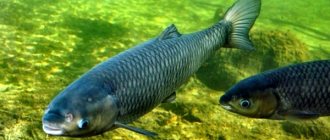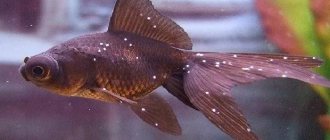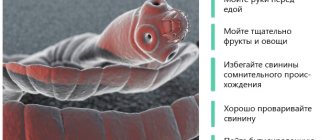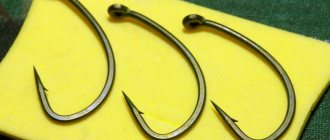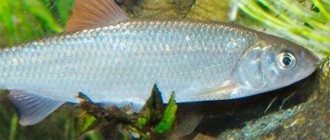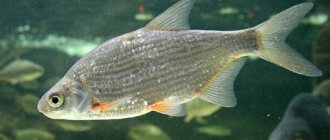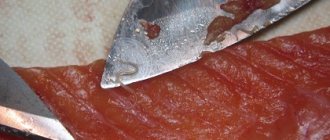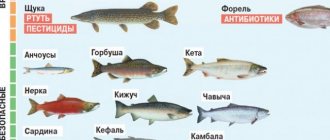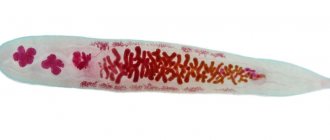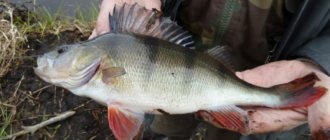Gill disease of unknown etiology (GILLD) or gill necrosis
Gill disease of carp is one of the most dangerous diseases that can cause mass mortality of farmed fish. The disease appears in early and mid-summer and subsides by autumn. Most often, two-year-old carp are affected.
The causative agent of the disease has not been identified. Gill disease of unknown etiology must be distinguished from branchiomycosis. The clinical signs of these diseases are largely similar. There are hypotheses about the viral and bacterial nature of the disease. It has been noted that the disease is often provoked by disturbances in the hydrochemical regime, primarily by an increased content of ammonia nitrogen and organic matter. Preventive measures aimed at creating favorable growing conditions are effective. It is recommended to use bleach or calcium hypochlorite, as well as quicklime. Quarantine restrictions are imposed on farms affected by gill disease. The disease can cause significant waste of live fish.
Saprolegniosis
Saprolegniosis is one of the most common fish diseases. It is believed that saprolegniosis is a secondary disease that occurs at the site of traumatic injuries on the fish’s body. In addition to trauma, saprolegniosis appears as a concomitant disease with other diseases, both infectious and invasive. The causative agent of the disease is lower fungi, mainly from the genus Saprolegnia, which are very widespread in nature. Saprolegniosis affects almost all freshwater fish that have been exposed to one or another effect or found themselves in unfavorable living conditions. Saprolegniosis often occurs in carp fish farms as a result of careless handling of fish, when kept in concrete cages, as a result of trauma during fishing, loading and unloading of live fish. The hyphae of the fungus penetrate the damaged tissues of the muscles, gills, and skin of fish, destroying the tissue. On the surface of the body, the fungus forms a coating similar to dirty cotton wool. Prevention is the main way to prevent saprolegniosis. All technological operations must prevent injury to fish. For preventive and therapeutic purposes, you can use drugs such as malachite green, brilliant green, and table salt. A type of saprolegniosis is Staff's disease. It manifests itself mainly in carp underyearlings during wintering. In this disease, fungi develop in the nasal cavities of fish. Fungal mycelium in the form of a cotton wool-like mass covers the head of fish, and fungal hyphae can grow into brain tissue. Staff's disease usually occurs in winter at very low water temperatures. Although there is evidence that this disease also occurs at temperatures of 5-6 degrees. Saprolegniosis of eggs is the scourge of hatcheries. Saprolegniosis affects the eggs of many fish species incubated in artificial conditions, mainly salmon and whitefish. The disease primarily affects dead eggs and quickly spreads to healthy eggs. Selection of dead eggs is a labor-intensive but effective method of preventing saprolegniosis. To combat this disease, malachite green, methylene blue, and brilliant green are widely used. Treatment of water with ultraviolet lamps and ozonation of water also prevent the development of saprolegniosis.
Diseases of pond fish are caused by many bio- and abiotic factors and environmental factors. These include viruses, bacteria, algae, fungi, helminths, crustaceans, toxic substances, hydrochemical disturbances and other components of the external environment.
Infectious fish diseases are caused by viruses, bacteria, algae and fungi. Invasive diseases are caused by parasitic organisms: helminths, protozoa, crustaceans. There are a large number of non-communicable fish diseases that arise as a result of habitat disturbance. These include nutritional diseases caused by defective or toxic feed, toxicosis,
changes in the hydrochemical regime of the reservoir, temperature changes, excess gas content, injuries, etc.
It should be noted that many diseases arise as a result of a decrease in the immunity of fish due to various stresses. Non-contagious and invasive fish diseases are often complicated by the development of pathogenic microflora. The clinical picture of a particular disease usually has a certain specificity. However, in many cases, the clinical manifestations of different diseases are very similar. Since freshwater fish live in a hypo-osmotic environment, any metabolic disorders lead to disruption of salt-water metabolism: fish develop bulging eyes, dropsy, and ruffled scales. Making a diagnosis only on the basis of clinical signs in ichthyopathology is unacceptable. For example, ulcers on the body of fish are not always rubella. They can appear as a result of trauma during fishing, damage to fish by parasitic crustaceans, leeches, bites of predators, etc. Signs of rubella such as inflammation of the intestines, ascites, bulging eyes, ruffling of scales can also appear with coccidiosis enteritis, myxosporidiosis, toxicosis, and some nutritional diseases. Fish can be a source of diseases in humans and warm-blooded animals. In addition to such common helminthiases as opisthorchiasis and diphyllobothriasis, fish sometimes causes food toxicosis and toxic infections in humans.
The main route for the spread of infectious and invasive fish diseases is uncontrolled transportation from disadvantaged farms to healthy ones.
Some fish diseases, in particular carp rubella, are of a natural focal nature. This means that in certain regions of the country the pathogens are found in wild fish living in natural reservoirs. It is almost impossible to improve the health of a farm located in the area of a natural source of infection or invasion.
Consequently, transporting fish from this region to a safe body of water will most likely lead to its contamination. In recent years, cases of diseased fish being brought into previously healthy water bodies have become more frequent. The import of cheap marketable fish or fish seeding material from a disadvantaged region often results in the economic collapse of the farm.
This is especially dangerous for enterprises that organize fishing and frequently import fish from different regions of the country on the principle of “I’ll buy it where it’s cheaper.”
Common causes of fish disease in small ponds.
- Due to overpopulation of fish in the pond. Bacteria do not have time to process the waste products of too many crucian carp. Water pollution occurs and the fish's immunity weakens.
- Decomposition and souring of food not eaten by fish. This releases ammonia into the water, which reacts with oxygen to form nitrates. As a result, the fish suffers from oxygen starvation, which leads to a decrease in its immunity.
- Unfavorable winter. If oxygen does not get under the ice crust, the fish will not enter hibernation. The result is a weakened immune system, a reduction in the number of fish in the winter, and in the spring the fish become infected with rubella.
What to do if the fish in your pond still get sick?
Plant plants in the pond that will process nitrates. All higher algae have this property. If you balance the pond's ecosystem, the risk of rubella will be greatly reduced. For prevention, prepare a methylene blue solution. Soak corn in it for a day. Feed the fish grain for three days in a row. Add corn in the spring and fall when fish are eager to feed. Such a remedy can cure rubella at the “pre-acute” stage. As prompt treatment measures, it is necessary to use medicated feed. We recommend using medicated feeds in your pond in the early autumn (before freeze-up) and late spring (after the ice melts) periods. This is done in order to increase the immunity of your fish and prevent its diseases. Medicinal feeds are prepared according to a special recipe. As practice shows, it is best to purchase medicinal feed from fish farms. Then you can definitely be sure of their effectiveness. Many cheap feeds are not effective due to their incomplete consumption by the fish; the quality composition of such feed is extremely low and when the feed is swallowed, the fish throws it back.
If you have to solve the problem of fish disease in your pond or consider it necessary to prevent possible diseases of your fish, which is the most correct solution, then we are ready to offer you our services. These include consulting services in matters of keeping fish and assistance in their treatment, as well as the use of medicinal feed from the best fish farms in the central part of Russia. Over many years of working with fish farms in our country, we have acquired valuable relationships with leading fish farmers and full-system fish farms - from obtaining larvae to growing live commercial fish. Contact us. We are ready to share our experience.
Branchiomycosis
An infectious disease of pond fish caused by a microscopic fungus. The causative agent Branchiomycosis destroys gill tissue. Fish with Branchiomycosis refuse to feed, accumulate near the shores, rise to the surface of the water, and assume a vertical position. The disease usually occurs in the summer, lasts 2-8 weeks and causes massive death of fish. Water bodies are quarantined, sick fish and corpses are caught and destroyed. In spring and autumn, ponds are disinfected with bleach or quicklime.
Piscicolosis
Most often, sick fish are caught in the fall, when the parasites - piscicola leeches - grow to visible sizes. They settle in the area of the head and tail, look like a spindle, the whole body is covered with white and dark gray or brown stripes. Sick fish feel severe itching, they are very restless, jump out of the water, and are not afraid of anything. After the leech falls off, bleeding wounds remain on the body, on which fungi settle, causing another dangerous fish disease for humans - saprolegniosis. It is strictly not recommended to eat fish on which piscicolae are found, since leeches inject a special substance into the blood that prevents it from clotting. If you eat a lot of such fish, you can get severe poisoning with impaired kidney and liver function. Infected fish should be destroyed in any way, it is better to do this as far as possible from bodies of water.
Rubella of carp
Rubella (aeromonosis) of carp is one of the most common and dangerous diseases of carp and carp. In addition to these species, rubella is observed in crucian carp, tench, grass carp and some other species, but these cases are usually rare.
Rubella is a contagious disease, which, according to some researchers, is caused by a virus, while others believe it is caused by bacteria. There is objective evidence in favor of both hypotheses. Apparently, the term “rubella” covers several diseases with similar symptoms. Based on research conducted by the All-Union Institute of Experimental Veterinary Medicine, it was proposed to distinguish three independent diseases: aeromonosis caused by the bacteria Aeromonas punctata, pseudomonosis caused by bacteria of the genus Pseudomonas, and spring viral disease caused by the Rabdovirus cyprini virus (Vasilkov et al., 1978).
Rubella usually occurs in the spring or first half of summer. Sometimes the disease occurs in winter. Most often, two- and three-year-old carp are affected. The disease can cause massive waste. In the acute course of the disease, hemorrhages on the surface of the body, dropsy, bulging eyes, and ruffling of scales are noted. In the subacute course of the disease, the signs described above are supplemented by the formation of ulcers that have a whitish or reddish rim. The chronic form of rubella is most often observed in the second half of summer and is accompanied by the formation of ulcers on the skin and fins. The diagnosis can only be made by a specialist based on a set of studies.
To treat fish, drugs such as chloramphenicol, tetracycline, biomycin, methylene blue and a number of other drugs are used. In recent years, the use of probiotics has come into practice. Treatment is prescribed only by an ichthyopathologist, taking into account many factors relating to a particular body of water. Inappropriate use of antibiotics can cause negative results.
The only reliable method of rehabilitating a farm from rubella is summering, during which the ponds are drained, treated with disinfectants, and fish of all age groups are sold to the retail chain or disposed of. If sick fish live in a farm's water supply, it is almost impossible to improve its health.
Carp aeromonosis - is the fish disease dangerous and how to treat it?
Aeromonosis is a fairly common disease that affects all types of fish. There are fish that are more resistant to infection, for example, crucian carp, and there are fish species that are very susceptible to this disease, for example, carp.
Description of the disease
Aeromonosis is an infectious disease of fish of the carp family . Also called rubella, hemorrhagic septicemia, infectious dropsy.
The disease is caused by the bacteria Aeromonas hydrophila. The disease is widespread in Europe, Asia, South America - in those countries where carp farming is practiced.
Infected fish can be identified by inflammation and hemorrhages on the skin, bulging eyes, general dropsy and redness of the entire body, flaky scales.
The causative agent of the infection is transmitted by sick fish and their corpses, fish carriers of this bacterium.
There can be several methods of transmission of the disease : direct contact of sick fish with healthy, indirect contact, in which the source of infection becomes water and food with infection, fishing equipment, equipment, utensils, waterfowl, blood-sucking parasites (for example, leeches), uncontrolled transportation of fish from fish farms that are unfavorable for aeromonosis diseases.
Attention! Acute outbreaks occur in spring and summer, when water temperatures reach 15 to 20 degrees. In autumn the outbreaks fade. Fish that have recovered from the disease become immune to the disease.
In what bodies of water do they get sick?
Aeromonosis develops when the fish is tightly packed and injured, or when the fish is exhausted due to inadequate feeding. Also places where the disease often appears are closed, heavily overgrown or polluted ponds and lakes, reservoirs, and small slow rivers.
Behavior of infected fish
A fish infected with aeromonosis becomes inactive, stays close to the shore at the very surface of the water, such fish develop a loss of coordination of movements and die.
Control measures and prevention
In cases where carp aeromonosis is detected in fisheries or natural reservoirs, there is a need to carry out quarantine measures. In contaminated reservoirs, flying or a complex method is used.
To fly, breeding and fishing completely stops:
- in the autumn season, reservoirs are drained, fish are caught, and conditionally healthy fish are sold for trade, without contact with farms healthy from aeromonosis;
- the operation of fish ponds is stopped for a year, during which time they are cleaned of silt, disinfected, frozen and dried;
- fishing gear and workwear are disinfected by boiling or formaldehyde;
- After all procedures, healthy fish are released into the reservoirs.
With the integrated method, the following activities are carried out:
- raising ponds for summer;
- workers are assigned to unfavorable reservoirs, carp are treated, and ponds are disinfected;
- favorable conditions for fish are established.
Treatment and prevention are also using various antibiotics, nitrofuran drugs, sulfonamides and methylene blue.
The feed is mixed with biomycin, chloramphenicol, syntomycin, feed antibiotics, furazolidone, furtin, nifulin, furadonin and methylene blue.
The fish are fed standard granulated medicated food , or medications are added to the dough-like food.
The duration of treatment is a week : the first five days the fish are given medicinal food in normal doses, then two days - regular food. The course is repeated twice or three times during the summer. Fish treated with antibiotics and furazolidone is sold three weeks after the end of treatment.
Reference! Quarantine from farms is lifted a year after the last case of aeromonosis has been identified, all veterinary and sanitary measures have been carried out and a negative result of bioassays in fishing reservoirs has been obtained.
The main preventive measure is to protect healthy fisheries from the introduction of aeromonosis pathogens into them. For this purpose, transportation of fish for cultivation is subject to strict veterinary control.
Planting material imported to farms is placed in ponds separately from local fish; producers and repair teams are subject to quarantine for a period of at least a month, while the average daily water temperature must be above 12 degrees.
If the water temperature is lower, the quarantine period is extended.
Is sick carp dangerous for humans?
Aeromonosis does not pose a danger to humans and carnivores.
Infected fish that has not lost its marketable appearance and meets nutritional qualities and requirements is allowed for human consumption without any restrictions .
Fish, which has an unsightly appearance, is fed to farm animals, poultry, and fur-bearing animals, having previously been boiled or processed into fishmeal.
Conclusion
Aeromonosis of carp, although expressed in unpleasant external symptoms of a sick carp, is not as terrible as it might seem at first glance.
The disease is treatable , it can be prevented using preventive measures, and most importantly, it is not dangerous for a person, even if he happens to eat diseased fish.
Other carp diseases in the video below.
Source: https://dlyaribakov.ru/bolezni-ryib/aeromonoz-karpov.html
Inflammation of the carp swim bladder (SVB)
The cause of the disease is not fully understood. The most substantiated point of view is the viral nature of the disease. The infection is transmitted mainly through direct contact between sick and healthy fish. Apparently, the pathogen can also be transmitted through water and soil.
Carp, carp and their hybrids are affected. Occasionally, cases of the disease have been reported in silver carp, pike, grass carp, crucian carp and pike. The main symptom of this disease is damage to the walls of the swim bladder. Inflammation often affects other internal organs. Fish of different age groups are susceptible to the disease. Fingerlings of carp suffering from STD usually die during wintering. In the acute form of the disease, massive waste is possible. Over time, fish develop immunity to this disease, and it gradually subsides. However, this is only possible if quarantine restrictions are observed. There are no specific drugs against this disease.
PARASITIC DISEASES
During ichthyopathological examination of fish living in natural reservoirs and in ponds of fish farms, many parasitic organisms belonging to different species are usually found. If the number of these organisms is small, the fish practically does not suffer from their presence. However, at high planting densities, characteristic of industrial growing conditions, the number of one or more species of parasites can increase sharply, leading to disease.
When growing carp, the most common invasive diseases are ichthyophthyriosis, trichodiniasis, costiosis, apiosomosis, phylometroidosis, bothriocephalosis, and caviosis. These diseases are usually treatable if diagnosed early.
Ichthyophthiriasis
This is one of the most dangerous ectoparasitic diseases that can cause massive waste of fish, especially juveniles. Almost all types of fish get sick. The disease is caused by ciliary infusuria, the name of which is translated from Latin as “Fish louse of many children.” The parasite develops and matures under the skin of the fish, and therefore it is resistant to many drugs that are effective for other diseases. Having reached maturity, the parasitic ciliate leaves the fish, sticks to underwater objects, and forms a cyst. After repeated division, several thousand daughter cells are formed in it. These cells then go out into the water and float freely for 2-3 days. If they manage to attach to the fish, they are embedded under the skin, where they develop.
Sick fish are weakened, stay in the upper layers of water, and react poorly to external stimuli. A small white rash similar to semolina is noticeable on the surface of the body and gills. The diagnosis is made only after a microscopic examination of scrapings from the surface of the skin and gills, since a “white rash” can appear with some myxosporidiosis, and can also be a manifestation of the “nuptial plumage” of male carp during the spawning period.
The fight is difficult because the parasite is located under the skin of the fish. Treatment is carried out only under the guidance of an ichthyopathologist. Prevention consists of preventing the entry of trash fish into reservoirs, pools, and cages where industrial cultivation is carried out. Transportation and transplantation of fish must be carried out using such preparations as malachite green, violet “K”, basic bright green, potassium permanganate.
Medicines for fish in the pond. How to treat pond fish? Symptoms of diseases
The fish in the pond is sick, what should I do?
The disease can enter a pond quite easily - after all, it is located in an open space, so the pond is especially susceptible to various parasites and bacteria.
Fortunately, there are high-quality universal antifungal and antiparasitic drugs that can be used in a common pond.
The disease can develop for various reasons - temperature changes when releasing fish into the pond, stress from transportation, change in feeding diet, etc.
When you notice the first signs of illness in fish, every hour and even every minute counts ; the life of all the inhabitants of the pond depends on the speed of action. Ichthyostop and OMNIPOND are unique preparations; by adding the required amount of medicine to the pond, you will instantly protect your fish from the further spread of the epidemic.
Currently, the line of the most effective drugs for getting rid of fish diseases has been updated; in recent years, drugs for combating fish diseases in ponds from Vladox have proven themselves to be excellent.
You can also add this remedy once a month for prevention, cutting the dose in half. Currently, they have been replaced with better and more effective analogues, and we also have them and which we mentioned above!
Unfortunately, fish can get sick even with the best care.
It is important to spot the disease early , this requires some basic knowledge about fish diseases. Every day you should monitor the health of your fish; when feeding your fish, you should pay attention to the possible appearance of disease symptoms and unusual behavior. Be vigilant even if only one fish is somehow different from the others or behaves differently.
As a rule, a distinction is made between external and internal diseases. External diseases occur on the fins, skin and gills (white coating on the scales, redness of the fins, scratching on stones, noticeable wounds, etc.). They are usually noticeable in the early stages and therefore can be treated promptly. Internal disease is more difficult to recognize, but with careful observation, you can detect atypical behavior of fish, which includes: loss of appetite, unusual swimming style, apathy and discoloration, wounds and redness on the body of fish, visible flukes (mites, stick insects).
The basic rule applies to all diseases: prompt treatment significantly increases the chances of recovery of fish and their preservation.
Careful observation of pond fish, of course, is not as easy to do as in an aquarium, so it is not always possible to establish an accurate diagnosis - especially in large bodies of water and for rather shy fish.
Symptoms of fish disease in a pond
How to determine the symptoms of disease in fish in a pond?
Below we present a list of the most common fish diseases in artificial reservoirs that respond well to treatment:
Bug eyes - swollen eyes, clouding of the eyes, protrusion from the orbits, often occurs due to improperly selected food or infection
Fin rot (saprolengia) – plaque on the fins, lethargy, spots
Hexamitosis - refusal to feed, ulcers on the head, darkening of the scales, excrement in the form of white threads)
Dropsy - lethargy, the fish lies on the bottom all the time, noticeable swelling, scales bristling
Ichthyophthyriosis - small spots on the body and fins of fish, rapid spread of infection, fish constantly rub against the ground and do not eat, surgical treatment is required!
Furunculosis - often asymptomatic, the acute form is characterized by darkening of the scales, red spots, mucous excrement, bulging eyes, pale gills.
Plistophorosis - they stop eating, become exhausted, the color fades, pallor is noticeable under the skin, twitching, impaired coordination of movements, difficult to treat
Microbacteriosis (fish tuberculosis) - they huddle in the corners of the reservoir, the abdomen sag, the color changes, ulcers appear, and refuses to eat
Peptic ulcer is a bacterial infection caused by parasites. Abscesses appear in the form of darkening on the scales, boils, bloating of the abdomen, ulcers
Hydrodactylosis - caused by skin worms, mucus appears on the fins and scales, the scales darken, the fins are damaged, swims near the surface of the water (a characteristic feature for parasites), the fish rubs against the bottom, and the gills turn pale
We have listed the most common types of pond fish diseases that can be treated with our pond fish medicines, which can be purchased with delivery.
What effective medicines for fish in a pond should I buy?
The assortment of our website includes the entire necessary list of broad-spectrum drugs ; they can be conveniently purchased with delivery. Developed specifically for such cases and allowing treatment to be carried out quite gently and successfully, even if the true cause of the disease is unknown, which happens quite often.
The wide spectrum of action of each of these drugs covers a significant part of pathogens, parasites and bacteria that usually infect fish in an artificial reservoir. These products correspond to the best reviews and will quickly remove plaque on the fish, ulcers and white spots, and if the disease is advanced, then, for example, with the help of omnipond and or ichthyostup , your pond will quickly begin to return to normal! The latter, by the way, will also destroy parasites on the fish’s body.
Preparations for the treatment and prevention of pond fish diseases. Choose now!
Trienophorosis
The causative agent of the disease is a cestode from the genus Triaenophorus. Development occurs with the participation of two intermediate hosts: crustaceans and fish, mainly trout, perch, and a number of cyprinids. The main host is pike. If there are both trout and pike in the reservoir, the occurrence of this disease becomes very likely. The management of fish farms where fishing is organized and where trout are imported needs to implement a set of measures to prevent this disease. Treatment for the disease has not been developed. In order to prevent fish diseases in pond farms, it is necessary to protect the ponds from the penetration of pike into them from water supply sources.
With intensive infection, emaciation of fish, bloating of the abdomen, and pallor of the mucous membranes are observed. Deaths have been observed among fry and young of the year.
Fibrosarcoma
In principle, this is also not a disease of fish that is dangerous to humans, most often of very large fish - pike perch and pike, cyprinids, less often - marinka and asp. Sick fish are more often found in the fall; small and very large tumors are noticeable on its body. They can be white, light gray, brown, pink, and ulcers are often visible next to them. Such fish suffer from an increased appetite and grab everything that moves, so they are most often caught with live bait and lures. Eating such fish is strictly not recommended.
There have been recorded cases of food poisoning with a difficult recovery period and subsequent cancer (not necessarily for this reason), since the nature of this disease is viral, and it is not yet clear how these viruses interact with human cells.
Philometroidosis of carp
Philometroidosis is caused by roundworms called nematodes. The main host of the parasite is carp, the intermediate host is cyclops. Female phylometras reach a length of 90 - 160 mm. They are localized in the carp's scale pockets in the area of the head, pectoral fins, and behind the gill covers. Males are much smaller than females and are usually found in the walls of the swim bladder.
When cleaning fish from scales, female phylometers look like pink-red rings with weak mobility. Although phylometra are not dangerous to humans, their detection in fish causes a negative reaction in the person preparing the fish. The buyer usually returns such fish to the sellers. The main cause of the disease is the transportation of fish from unfavorable fish farms to prosperous ones. Treatment of fish is possible using a number of drugs that have a high therapeutic effect.
Call us
Here is a list of the most common pond fish diseases:
Gill necrosis
It is dangerous because it leads to massive death of fish, up to the entire population of the reservoir. Most often it affects two-year-old carp and usually appears in early June. The causative agent of this disease in fish has not yet been identified; the disease is of viral, bacterial or fungal origin. Signs of the disease are visible damage to the gills, which become inflamed due to the fact that the fish constantly floats to the surface, swallows air, and refuses food.
Saprolegniosis
One of the most common diseases. It is caused by a fungus that penetrates the protective layer of the fish’s body and infects it. It looks as if a greenish coating appears on the body of the fish. The disease most often appears as a result of careless handling when the fish receives mechanical damage, for example, during transportation or catching.
Staff's disease
It is a type of saprolegniosis, the mycelium affects the nasal cavities of the fish, but grows so that it covers the entire head of the fish like a cotton wool cap. The disease can also affect fish eggs. As a preventive measure, the method of water ozonation is used, and ultraviolet lamps are also used.
Branchiomycosis
This disease is also fungal in nature and affects the gills of fish. It becomes difficult for the fish to breathe, it floats to the surface, grabs oxygen and refuses food. This disease is dangerous because it can lead to the death of the entire population in the pond.
Rubella
Most often it affects carp and carp; the disease is highly contagious. The causative agent of fish rubella has not yet been identified, but most likely it is of viral or bacterial origin. Signs of the disease are the presence of hemorrhages in the form of red spots on the scales and bulging eyes. Treatment is carried out with antibiotics, but only after an accurate diagnosis has been established.
Ichthyophthiriasis
The causative agent is an infusoria - a parasitic organism that affects the internal organs of fish. A sign of the disease are white growths that spread throughout the body and spread to the gills. The fish becomes lethargic and does not respond to external stimuli. Treatment is complex and lengthy; it is easier to destroy infected fish and focus efforts on preventing infection of the next ones. To do this, you need to clean and drain the reservoir.
Philometroidosis
Caused by roundworms that settle in the scale pockets of fish. Red worms can be seen visually while cleaning fish. The presence of these worms in the body of a fish does not pose a danger to humans, but causes unpleasant emotions.
Bothriocephalosis
Bothriocephalosis is a helminthic disease of fish characterized by intestinal damage. Caused by the tapeworm Bothriocephalus acheilognathi from the family. Bothriocephalidae. Carp, carp, crucian carp, bream, bluegill, grass carp, silver carp, roach, ide, barbel, catfish and others are affected, but the most susceptible are the fry of carp, carp and grass carp, the infection rate of which reaches 80 - 100%. In this case, mass death of juveniles occurs.
Bothriocephalosis is widespread both in pond farms and in natural reservoirs. This is facilitated by uncontrolled transportation of fish, the presence of common sources of water supply, growing fish in head ponds, etc.
Fry and fingerlings are most intensively infected in July - August, when zooplankton develops abundantly in ponds and fish feed intensively.
Diplostomatosis
Diplostomatosis is an invasive fish disease caused by the larvae of digenetic flukes from the family Diplostomatidae, which parasitize the eyes of fish. Diplostomatosis is widespread among fish living in natural bodies of water. Juveniles and adult fish are sick.
Characteristic signs of the disease: clouding of the lens, formation of a cataract, blindness. Sometimes bulging eyes are observed. The membranes of the eyes become inflamed, impeding blood circulation, as a result the lens is destroyed, death and ulceration of the corneal tissue occurs, and the lens falls out. Saprolegnia fungi colonize the affected areas of the eye. Having lost vision, the fish does not take food well and loses weight; juveniles are stunted.
The causative agent of diplostomiasis develops with the help of two intermediate hosts: the first is a pond mollusk, the second is a fish. The main host is a fish-eating bird.
What parasites found in fish are especially dangerous for humans?
According to Rospotrebnadzor, the most common diseases caused by parasites are opisthorchiasis, clonorchiasis, diphyllobothriasis, and anisacidosis.
As Doctor of Technical Sciences, Deputy Director for Scientific Work of the All-Russian Research Institute of Fisheries and Oceanography Elena Kharenko , fish that live in freshwater bodies can most often encounter parasites such as broad tapeworm (one of the types of tapeworms) and opisthorchis (parasitic flatworm). According to Kharenko, in Russia, most helminthiases are registered in Siberia and the Far East. Infection occurs due to the fact that residents of these regions eat fish they catch themselves, as well as fish products manufactured with violations.
Which fish are healthy and which are harmful? Infographics Read more
But residents of all regions are not immune from encounters with tiny enemies. Some parasites can cause serious illness in humans. For example, opyrstochis (opisthorchia) - flatworms that infect the liver and bile ducts - often live in river fish. A person can become infected by eating fish from the carp family. These are ide, bream, dace, tench, asp, roach, bleak, rudd, minnow, podust, etc.
Another dangerous disease, anisakidosis, is caused by nematode larvae from the Anisakidae family. In an infected person, the gastrointestinal tract is affected, and ulcers of the walls of the stomach or small intestine may develop.
Another disease caused by parasites is diphyllobothriasis. This is a helminthiasis caused by a tapeworm (broad tapeworm). The disease affects the gastrointestinal tract and is often accompanied by anemia. A person can become infected with this parasite from pike perch, pike, burbot, perch, ruffe and other river fish. Larvae can also be found in marine fish species: chum salmon, Pacific salmon, pink salmon, etc.
The pulmonary fluke can cause paragonimiasis. This disease affects the lungs, muscles, and sometimes the brain. The disease occurs when eating crayfish and crabs that have not undergone sufficient heat treatment.
Article on the topic
Parasite under the skin. Why shouldn't you walk barefoot on the ground?
Postdiplostomatosis
Postodiplostomosis is a common invasive fish disease, recorded both in natural reservoirs and in spawning and rearing and pond farms. It is characterized by damage to the skin, muscles, and curvature of the spine. It is manifested by the appearance of black spots of various sizes on the body of fish, from which the disease received its original name - black-spotted disease. These spots are formed as a result of the deposition of black pigment in the habitats of helminth larvae.
The disease is recorded mainly in water bodies in the southwestern regions of the country, where herons are more common. Infection of fish occurs mainly in the spring and summer, which is associated with the development of the pathogen. Various types of freshwater fish are susceptible to post-diplostomiasis - more than 60 species: carp, carp, bream, roach, grass carp, silver carp, rudd, sabrefish, roach, ram, silver bream, perch, white-eye, chub, podust, etc. Most of these fish species have commercial significance. The fry and fingerlings of these fish species are most sensitive to the disease. The body of the affected fry is deformed, the spine is bent, flexibility is lost, and growth slows down. Sick fish rise to the upper layers of the water, become weak and are easy to catch. Black spots on the skin form in various places: on the fins, gills, tail, back, abdomen, sides, cornea of the eyes, on the mucous membrane of the oral cavity, etc. The number of such spots is several tens or even hundreds.
Sources of invasion are infected fish, shellfish and herons that infest water bodies with helminth eggs.
Cavious
Cavious disease is a helminthic disease of carp, carp and their hybrids, black and white carp, characterized by intestinal damage. Caused by the cestode Khawia sinensis from the family. Caryophyllaidae.
The disease is recorded in all carp breeding zones. All age groups of fish are susceptible to the disease, but mainly fingerlings and two-year-old carp in the spring and summer. In nature, the pathogen persists in fish during the winter. Helminths are localized in the intestines and remain viable, and in the spring they begin to produce eggs. Cavia larvae remain in the body of intermediate hosts - oligochaetes, which also overwinter in water bodies. in the lower layer of soil. In the spring, when the ponds are filled with water, oligochaetes become active and rise to the top layer of soil. Fish, feeding at the bottom of reservoirs, eat infested oligochaetes and become infected with caviosis.
Symptoms Sick fish are inactive and their mobility is limited. they stay more in shallow water near the shores of the pond, their skin is dull. Nutritional status decreases and emaciation is noted. The gills and mucous membranes are anemic, there is swelling of the abdomen and redness of the anus.
Argulez
Argulosis affects most pond fish, primarily juveniles, whose waste from argulosis becomes widespread. The causative agent of the disease is the gill-tailed crustacean of the genus Argulus. The crustaceans have a round shape, their size is 4-8 mm. They parasitize on the surface of the body, piercing the skin of fish. Inflammation usually develops at the site of injury, which is subsequently complicated by infection. Argulus can be seen with the naked eye. It looks like a rounded, flat gelatinous body with a diameter of several millimeters, often mobile. Two dark dots are clearly visible - the compound eyes of the crustacean. The disease is often observed in farms that organize recreational fishing and use wild fish (perch, bream, pike, roach, etc.) for stocking. Prevention is the most reliable way to prevent this disease. Effective treatment is possible only with the use of chlorophos, karbofos, and organochlorine compounds, which have a negative effect on the reservoir.
Diseases of crucian carp dangerous to humans and their treatment
Unfortunately, crucian carp, like other fish, can suffer from various diseases. They may be called
various bacteria and viruses. Also, some types of diseases can be transmitted to them from contact with crustaceans and protozoa. If the habitat is disturbed, then these fish may develop non-contagious diseases, including ordinary injuries. They can also arise due to severe stress experienced by the crucian carp.
With a metabolic disorder, fish may develop:
- ruffled scales;
- bulging eyes;
- dropsy.
In such cases, making a definitive diagnosis will be completely wrong. For example, if you see ulcers on the fish’s body or red spots, this is not necessarily rubella. The crucian carp could well have been injured by contact with crayfish and other organisms.
Some diseases can be dangerous both to other animals and to humans. For example this:
- opisthorchiasis;
- helminthiases;
- diphyllobothriasis;
- food toxicoses.
All infectious diseases of this fish are transmitted to humans due to uncontrolled transportation from disadvantaged farms to healthy ones. Sometimes diseases are also transmitted from wild fish in their natural habitat.
Rubella
Rubella is considered one of the most dangerous and common diseases in crucian carp. Experts have not come to a common conclusion as to what is causing its appearance – bacteria or viruses. Both versions have their supporters. Moreover, this disease simultaneously conceals several diseases that have similar symptoms:
- pseudomonosis;
- spring viral disease;
- aeromonosis
Rubella appears in crucian carp at the beginning of summer.
Although there have been cases when fish became infected with this disease in winter.
If the disease is complicated, then the crucian carp will experience hemorrhages on the surface of the body, ruffled scales, and bulging eyes. In the chronic form of the disease, severe ulcers appear on the fins and skin.
To cure fish, the following drugs are used:
- methylene blue;
- chloramphenicol;
- biomycin;
- tetracycline and others.
Only a specialist doctor can prescribe the correct treatment. In this case, various factors that relate to a particular body of water must be taken into account.
Argulez
Argulosis primarily affects young crucian carp. The causative agent of this disease is a small (up to 8 millimeters) gill-tailed crustacean. It pierces the skin of fish, causes inflammation and introduces various infections.
This crustacean is quite easy to spot. It is a gelatinous flat body several millimeters in size, which is very mobile. Two small dots are the compound eyes of the crustacean. To cure sick crucian carp and prevent the spread of the disease throughout the reservoir, the following means are used:
- chlorophos;
- karbofos;
- other chlorine-containing compounds.
Diplostomatosis
The larvae of digenetic flukes cause this disease in crucian carp. It affects both young and old individuals. Sure signs of the disease are:
- blindness;
- cataract;
- the appearance of a cataract;
- goggle-eyed.
In the area where the fish's eye is damaged, saprolegnia fungi appear. After this, it becomes much more difficult for crucian carp to find food. Young individuals are significantly stunted in growth.
Bothriocephalosis
This disease affects the intestines of crucian carp. It is caused by certain types of tapeworms. If young individuals become ill, they die en masse. The disease is most common in midsummer.
Ichthyophthiriasis
This disease is the second most dangerous for crucian carp after rubella. It especially has a strong effect on juveniles.
The disease is transmitted from an organism that, translated from Latin, is called the “multiple fish louse.” The parasite lives under the skin of crucian carp, so treatment with many drugs sometimes has no effect on it.
The crucian carp, which has “inherited” this harmful organism, is very lethargic and practically does not react to any external stimuli. You can see a white rash on his body .
Crucian carp is also susceptible to other diseases. Fortunately, many of them are not dangerous and can be easily cured.
Lerneosis
Lerneosis is an invasive fish disease caused by parasitic crustaceans of the genus Lernaca. It is observed when growing fish in ponds and aquariums. The causative agent of lerneosis is L. cyprinacea and l. elegans, parasitizes herbivorous fish with L. ctenopharyngodnis, in carnivores - l. esocina. The crustaceans settle on the skin, fins, nasal pits, eye sockets, mouth and gill cavities of fish.
With a population of 10-15 specimens/p.z. cause anxiety in fish, increased sliming of the integument, and a bluish or gray coating appears on the body of the fish. The diagnosis is made after microscopy of scrapings. Treatment is selected taking into account environmental conditions and the condition of the fish. There are several effective drugs, which include malachite green, brilliant green, violet “K”, potassium permanganate, table salt, formaldehyde solution, etc.
Causes, symptoms and treatment of diseases in fish
The main ailments of fish with photos and descriptions will help not only accurately diagnose the disease, but also save the inhabitants of your home pond from death. Fish diseases cause great damage to fish farms, so for successful farming you need to be able to diagnose the most common diseases and take preventive measures in a timely manner.
The disease can be caused not only by a parasite or pathogen, but also by a reduced or increased content of certain substances in the water. Therefore, we recommend that everyone who breeds fish at home read this article in order to know exactly the main signs of pathology and methods of combating certain diseases.
Fish diseases: photo with description
It is necessary to dwell in more detail on the most common fish diseases, methods of their diagnosis and treatment.
- Bacterial hemorrhagic septicemia (rubella)
This disease of carp species is dangerous because it massively affects all individuals in the reservoir. Rubella can also appear in herbivorous species if they are kept in inappropriate conditions.
The main symptoms are (Figure 1):
- The surface of the body turns red and becomes covered with foci of subcutaneous hemorrhages;
- Ulcers appear, the scales begin to ruffle, and some individuals develop bulging eyes.
- A common symptom of rubella is abdominal dropsy.
The occurrence of the disease and the intensity of its course are influenced by water temperature. As a rule, rubella appears in the spring or early summer and subsides in the fall. In northern regions, where water temperatures are lower, the disease is much less common than in the south.
Note: Individuals who have recovered from the disease develop strong immunity to the disease, so re-infection, as a rule, does not occur.
Provoking factors are not only an increase in water temperature, but also an increased stocking density and injuries. The acute form of rubella develops quickly, and after 2-3 years it leads to mass mortality. In surviving individuals, a chronic form begins, which is accompanied by redness of the body without dropsy. Infected individuals practically stop eating and growing.
Figure 1. Symptoms of rubella in aquatic life
The disease is easier to prevent, although there are medications aimed at eliminating rubella.
First of all, you need to monitor the quality of planting material and import fry only from prosperous farms. In addition, care must be taken to ensure that individuals are not injured during transportation.
Additionally, you need to dry the bottom of the pond by draining the water from it, and also disinfect all equipment and tools.
For treatment, furazolidone and antibiotics are used, in particular chloramphenicol, which can be fed or administered intraperitoneally.
- Toxicoses and diseases of the gill apparatus
Gill rot (branchiomycosis) is a widespread fungal disease of carp species, which occurs mainly in the southern and central regions. The provoking factor is an increase in water temperature of more than 20 degrees and an excessive content of organic substances. The appearance of the affected individuals is shown in Figure 2.
Once in the vessels of the gills, the threads of the fungus clog them. As a result, the blood supply occurs unevenly and gradually parts of the bloodless parts of the gills die, rot and decompose.
Note: It is difficult to detect the disease in time, since characteristic signs begin to appear only a few days before death. Infected individuals refuse to take food, gather near inflows of water and do not respond to stimuli. To prevent the spread of the disease, prevention is carried out. Ponds in which fungal spores were found are drained in the fall, and in the summer they try to ensure maximum water flow. For treatment, add a mixture of copper sulfate and potassium permanganate solution to the water. Adding lime every two weeks in the summer (at the rate of 15-20 kg per ton of water) is also effective. Figure 2. Signs of gill rot
Toxicoses appear when the content of ammonia, pesticides, hydrogen sulfide or other chemicals in water is exceeded. To eliminate the pathology, premixes are fed or bleach is added to the reservoir.
The causative agent of the disease is a fluke, which parasitizes the gills and primarily affects juveniles. To prevent infection, the pond is pre-filled about a month before moving in.
Around mid-June, the supply of fresh water is stopped, after which rotted manure or suppressed aquatic vegetation begin to be introduced.
This method helps to completely improve the health of the reservoir within two years.
If the disease has already appeared, organic dye and chlorophos are added to the water weekly until the problem is completely eliminated.
The disease is caused by a tapeworm that lives in the intestines. It is important that the development of bothriocephalosis is impossible without an intermediate host (Cyclops crustacean). The eggs of worms fall to the bottom of the reservoir, complete their development and are absorbed by crustaceans. Within a week, the development cycle of the parasite is completed and the fish swallows the affected crustacean along with the helminth.
By attaching itself to the intestinal wall, the parasite damages it, causing inflammation. In addition, in the process of life, the helminth releases toxins that gradually poison the body. Signs of bothriocephalosis are:
- Bloated abdomen;
- Lethargy and refusal to eat;
- General exhaustion.
Most often, underyearlings of carp, crucian carp and grass carp are susceptible to infection. It is important that the parasite is able to remain viable for a long time, so for prevention, water bodies must be dried and disinfected with bleach.
Fish can be carriers of diseases that are dangerous to humans. In addition, helminths that are dangerous to humans can remain in the body for a long time. As a rule, before eating, the entrails are removed, and the meat itself is thoroughly cooked. But in some cases this may not be enough.
These diseases are considered the most dangerous for humans:
- Botulism: The causative bacterium lives in the soil and gets into the body of water with flood waters. Infection of an individual occurs through the intestines and skin. The botulism bacterium can only be destroyed by high temperatures, therefore, when eating dried or salted infected fish, after a few days a person develops severe toxicosis and without appropriate treatment the patient may even die.
- Yuksovskaya disease: the causative agent of the disease has not yet been identified, but it is known that infection occurs when eating predatory varieties (even with careful heat treatment). It is assumed that infection occurs when individuals eat spores of toxic plants that accidentally fall into the water. In humans, the disease manifests itself as severe muscle pain and loss of the ability to move. As a rule, the attack lasts only a few hours, but sometimes ends in death.
- Opisthorchiasis: this is one of the most severe parasitic diseases that can appear in a person after eating fish. The parasite has several intermediate hosts, but once it enters the human body it can remain there for several years. The helminth causes blockage of the bile ducts and can lead to cirrhosis of the liver. To prevent infection, a person should take personal precautions by not eating raw or under-processed foods.
Fish can also become a source of diphyllobothriasis. This disease is also caused by a worm that parasitizes the human intestines. The helminth causes damage to the circulatory system, provokes a lack of vitamin B, and in severe cases can even lead to death.
All diseases are caused by improper maintenance or non-compliance with growing technology. Therefore, you need to monitor the purity and chemical composition of the water, as well as maintain personal food hygiene, eating only well-processed products.
From the video you will learn how to correctly identify fish disease and eliminate it in time.
Causes
The main reasons why fish in a pond may develop diseases are caused by improper housing or feeding conditions. For example, when transporting from another farm, you cannot immediately release it into a pond. The bag of fish should first lie in water so that the temperature inside and outside the bag is equalized and the fish do not experience stress.
In addition, you need to monitor the cleanliness of the water in the pond and remove excess algae from the pond. If sick individuals are found in a reservoir, they should be immediately isolated, and everyone else should be prescribed medications to prevent disease.
Trichodinosis, apiozomosis, costiosis, scyfidiasis, trichophriasis
The diseases are caused by parasitic ciliates that develop on the surface of the body and gills of almost all cultivated fish species. When there are 1-5 parasites in the microscope field of view (10x10), clinical signs of the disease usually do not appear. With a population of 10-15 specimens/p.z. cause anxiety in fish, increased sliming of the integument, and a bluish or gray coating appears on the body of the fish. The diagnosis is made after microscopy of scrapings. Treatment is selected taking into account environmental conditions and the condition of the fish. There are several effective drugs, which include malachite green, brilliant green, violet “K”, potassium permanganate, table salt, formaldehyde solution, etc.
Diseases and parasites of river fish dangerous to humans
I will immediately warn the reader that if you carefully look at the appearance of the fish for the nature of diseases and parasites, and also carry out heat treatment (cooking and frying), even if it is not noticeable from the outside, then nothing will happen to you and you will not become infected with anything.
Rubella in freshwater fish
The most dangerous disease for fish is rubella.
Outbreaks occur in spring and early summer. They look bug-eyed and have water bubbles on their scales.
Typically, 90% of fish infected with rubella die. But if you survive, gray scars remain on your body.
A person who eats such fish cannot get rubella, but can be poisoned.
Useful and interesting: How to quickly clean scales from a perch without getting dirty in the kitchen?
Pox in fish
The most famous disease among fish is smallpox.
In such fish, watery tumors are visible on the body and fins, which will burst over time and scars will be visible on the body. Such fish grow slowly.
Fungi on the body of fish
On the body and fins of some fish you can see something similar to cotton wool - these are fungi.
This fungus prevents fish from breathing and moving. Therefore, their behavior is too active and rubs against stones. The disease occurs when the water temperature is low.
Black dots on river fish
You can see black dots on the body of some fish that look like bubbles in which helminth larvae live.
Such fish should be thrown away or well processed, salted and left overnight in the refrigerator.
I recommend reading: How to distinguish fresh chilled fish from defrosted fish - a trick of sellers!
Plague in fish
We can also get poisoned by fish if it has the plague.
These fish have reddish scales. It should be thoroughly cleaned of scales and washed under running water.
Tapeworm in fish - is it possible to eat such fish?
Another type of disease in fish, or rather, the fish becomes a repository - a home, as it were, for such tape parasites. In the stomach of river fish, helminths lay eggs and grow into normal adult worms.
Visually, such parasites can be seen and destroyed, but the eggs may not be noticed. Such eggs feel great in frozen, dried, and dried fish. Only after heat treatment during long-term (20 minutes) cooking at least +60 degrees do such worms die.
NUTRITIONAL DISEASES
| In industrial aquaculture with the transition to highly intensive forms of fish farming (in cages, pools, etc.), nutritional diseases cause damage. They are divided into 2 groups. The first includes diseases associated with the use of unbalanced feed in terms of fat, protein, carbohydrate, mineral and vitamin composition. The second group includes diseases that occur in fish as a result of consuming low-quality feed, contaminated with microorganisms (bacteria or fungi), their metabolic products, or containing oxidized fats. Nutritional diseases occur in fish of different species and ages. They reduce the growth rate of fish and can cause their death. The peculiarities of their manifestation require not only general, but also special approaches to their prevention. |
